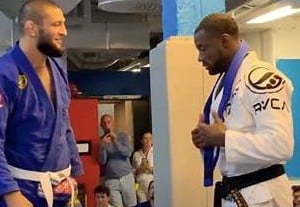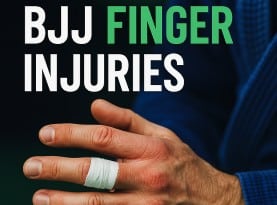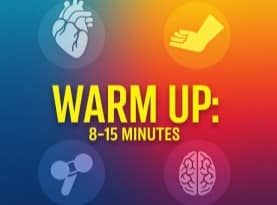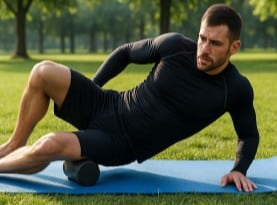The Neuroscience of Learning BJJ: How Adults Build Skill and Brain Power
Learning Brazilian Jiu-Jitsu (BJJ) as an adult can feel overwhelming. The techniques are complex, and progress is slow, but neuroscience tells us that adults remain highly capable of learning and even enhancing their brain function through practice. This article explores how the brain acquires motor skills, particularly in sports such as Brazilian Jiu-Jitsu (BJJ), and how understanding the underlying neurological processes can lead to more effective training.
Neuroplasticity and Adult Learning
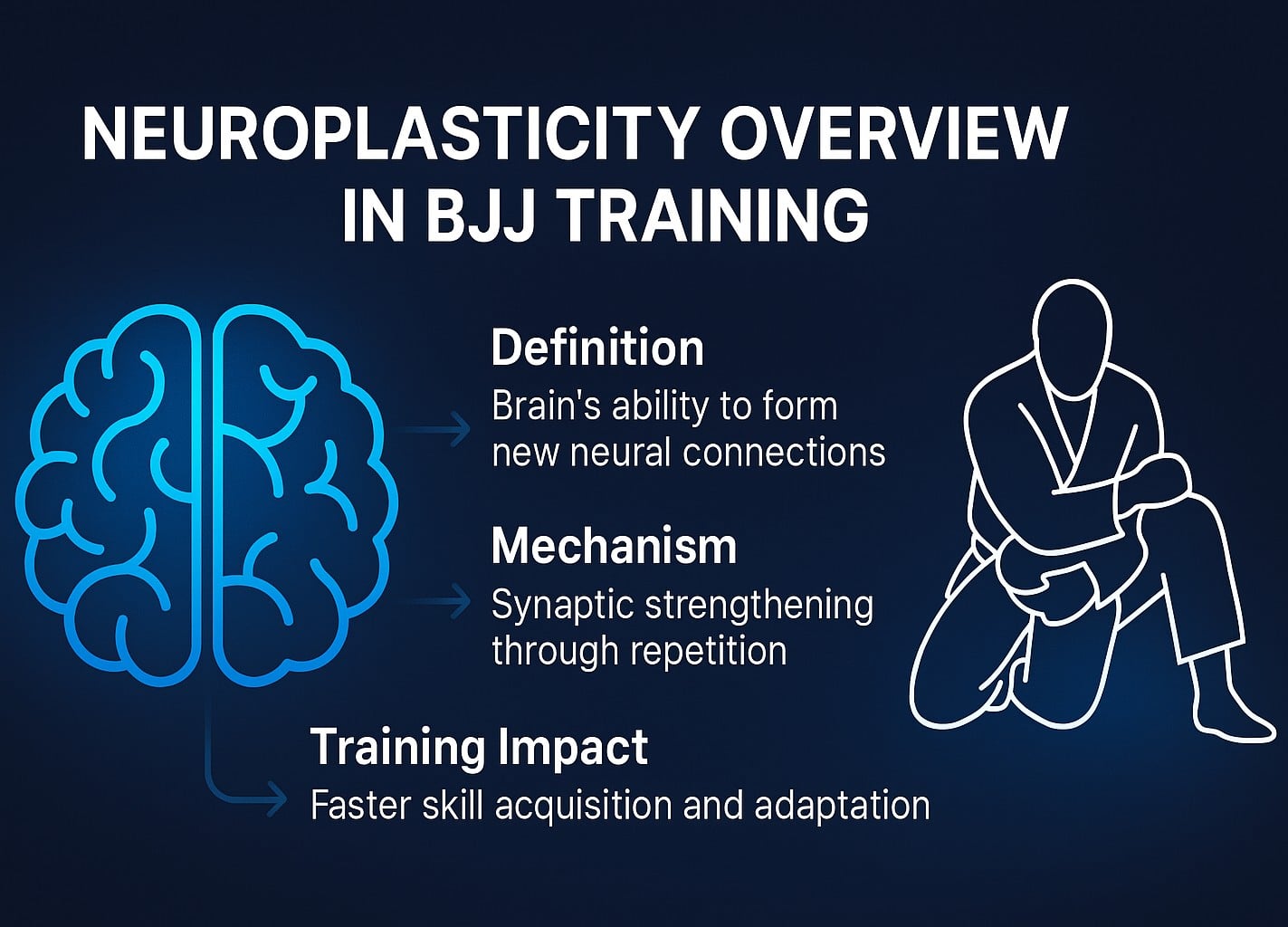
Neuroplasticity refers to the brain’s ability to reorganize and adapt in response to new experiences and learning. Contrary to the outdated belief that the brain becomes fixed after childhood, research confirms that adults can still form new neural connections, grow gray matter, and improve white matter connectivity through consistent, focused training.
Motor Skill Learning Happens in Stages:
- Cognitive stage: The beginner phase, where movements are consciously controlled and often clumsy.
- Associative stage: Improved execution with fewer errors as the brain refines its motor pathways.
- Autonomous stage: The skill becomes automatic, requiring little conscious thought.
Over time, control of movement shifts from high-level cognitive areas to motor-specific brain regions, such as the motor cortex and basal ganglia.
The Power of Deliberate Practice
Deliberate practice is focused, purposeful training aimed at improving performance. It’s not about repeating moves mindlessly, but about consciously correcting and refining each repetition. Neuroscience shows this kind of practice strengthens relevant neural circuits and builds myelin, a fatty insulation that speeds up signal transmission in the nervous system.
Key points:
- Start slow and precise to encode the correct movement pattern.
- Gradually increase speed or complexity.
- Focus on one small goal per session to improve retention.
- Frequent, spaced practice is more effective than long, infrequent sessions.
Feedback Loops and Error Correction
Skill improvement depends on recognizing and correcting errors. Your brain compares expected outcomes with actual results and adjusts future attempts based on that feedback. This process involves both intrinsic feedback (what you feel) and extrinsic feedback (from coaches or video).
Immediate feedback is most beneficial for beginners, while delayed feedback benefits advanced learners by encouraging self-assessment. Embrace mistakes; they’re essential for refining your technique.
Visualization and Mental Rehearsal
Visualization activates the same brain areas as physical execution. Mentally rehearsing a technique strengthens neural pathways and helps consolidate skills, even when you’re off the mats.
Tips:
- Make visualizations vivid—feel the grips, angles, and timing.
- Use internal perspective (first-person view) for better muscle engagement.
- Visualize during downtime, before sleep, or when injured.
“Repetition Without Repetition”
Repeating a movement in identical conditions is less effective than practicing the skill in varied scenarios. Known as “repetition without repetition,” this approach encourages adaptable, generalized skill learning.
Examples for BJJ:
- Drill techniques on both sides.
- Change starting positions or resistance.
- Practice with different body types.
Sleep and Recovery: The Unsung Heroes
Sleep plays a crucial role in consolidating motor skills. During deep sleep, your brain replays and strengthens the neural circuits formed during training. Research indicates that both overnight sleep and brief rest periods can improve performance.
Recovery tips:
- Aim for 7–9 hours of quality sleep.
- Use short breaks between drills to let the brain process.
- Schedule rest days to avoid cognitive and physical burnout.
How to Train Smarter for Your Brain
- Set clear goals for each session.
- Drill with attention to detail.
- Use feedback to correct errors quickly.
- Incorporate visualization daily.
- Mix up training conditions regularly.
- Prioritize sleep and rest as part of your training plan.
Conclusion
Your brain is designed to learn, adapt, and improve—even well into adulthood. With smart, intentional training based on neuroscience, you can accelerate your BJJ learning while building stronger neural networks. You’re not just training your body; you’re rewiring your brain to become faster, sharper, and more capable with every roll.
Sources
- Motor Skill Learning and Neuroplasticity: Kleim & Jones, Journal of Speech, Language, and Hearing Research
- Myelin and Skill Acquisition: Fields, The Neuroscientist
- Deliberate Practice and Expertise: Ericsson et al., Psychological Review
- Sleep and Skill Consolidation: Walker & Stickgold, Neuron
- Visualization and Motor Learning: Decety & Grèzes, Neuropsychologia
- Feedback and Learning: Schmidt & Lee, Motor Control and Learning
